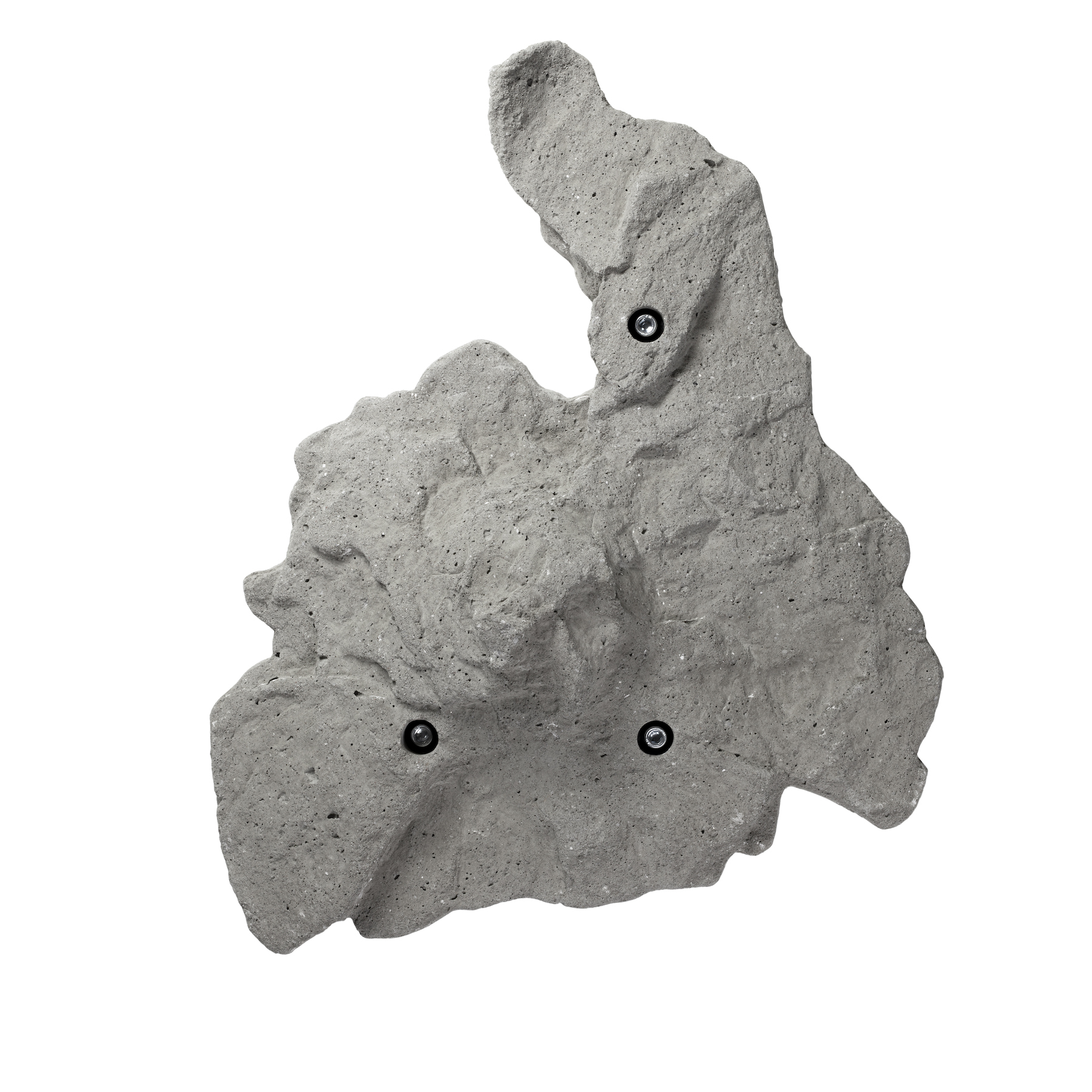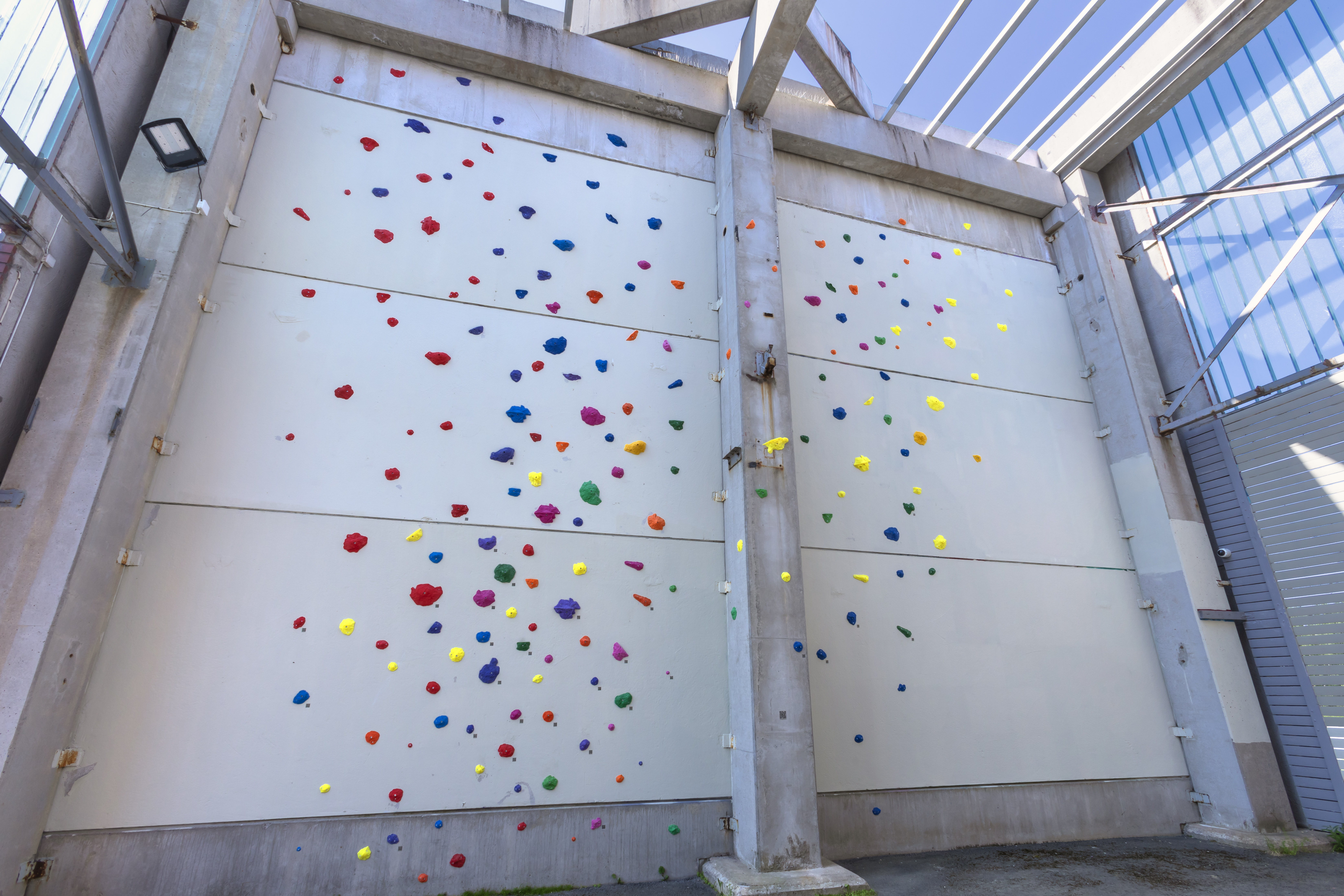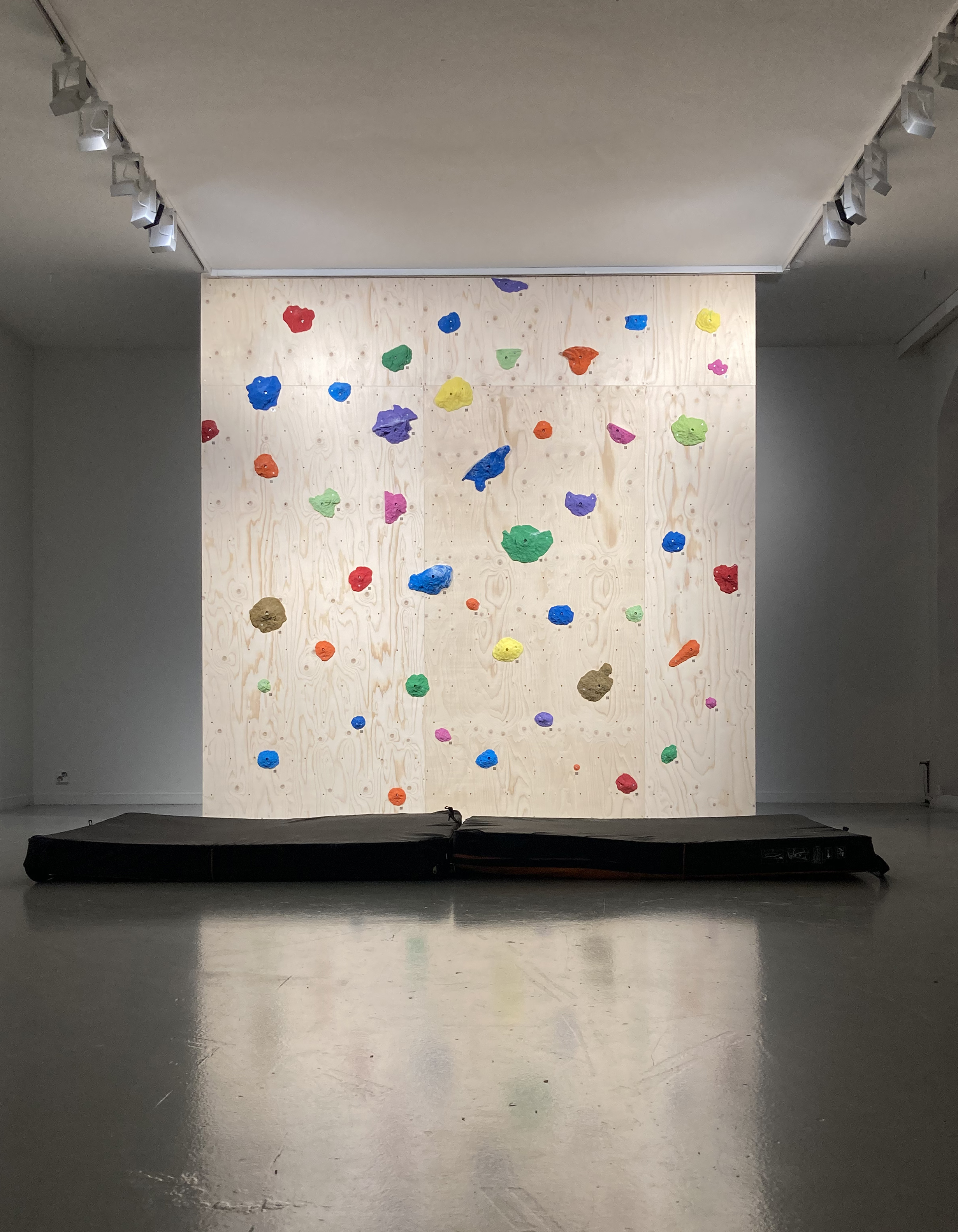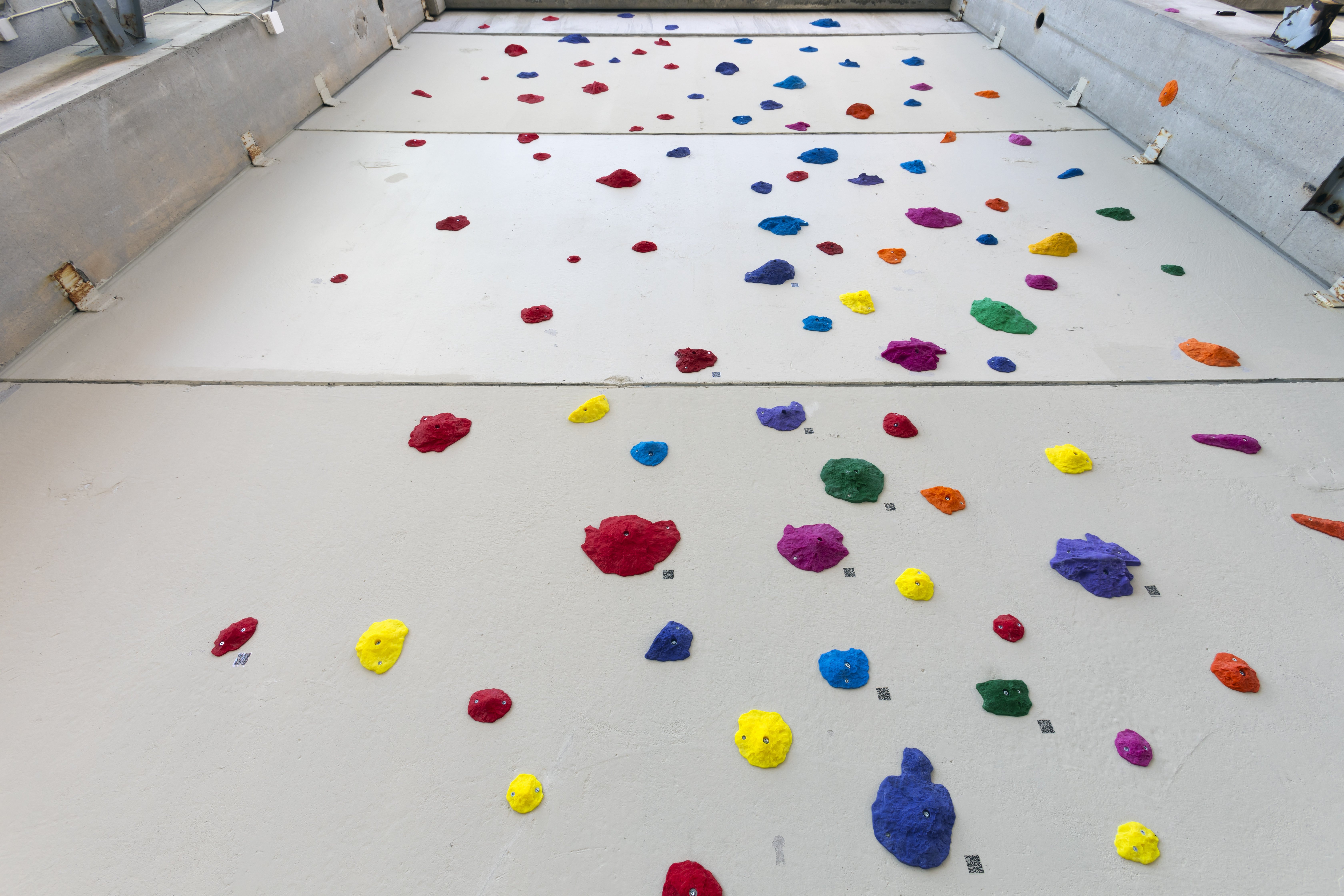
There are many places in Helsinki that still retain traces of World War II - scars of grenades and bombings. Do these traces have some value for collective memory? History without memory is as unreadable as a flat wall made of granite. There is nothing to hook on to.
The act of climbing for me is a way of understanding. As a Russian with Finnish roots, I think of the complex relationships between these two countries on a very personal level. During the war, my grandfathers were literally on opposite sides of the border. One was witnessing the bombardment of Helsinki by the Soviets while the other survived under the Finnish army air attacks in Petrozavodsk.
I climb these traces in an attempt to understand these complex relationships and let the rain wash away chalk marks left after my grips.
The Climbing a Memory project was started in the year 2018 in the frame of the public art interventions series Microsites Vallila. In spring 2021 the project was continued as a part of the Kuvan Kevät 2021 exhibition. The manifests itself in three different directions: online - as the online guide www.climbingamemory.com, outdoors - as a series of performance interventions in public space and indoors - as a series of exhibitions in the gallery spaces.
The first indoor implementation has taken place during Kuvan Kevät 2021. And the second gallery implementation was presented in October 2021 in the Project Room gallery. The series of performances have started in 2018 and still continues.
Please follow the online guide on climbingamemory.com to make your own path through the Climbing a Memory project
We were assigned to the Vivola farmstead, 90 km from Helsinki. I was playing in the yard when I heard a humming sound. It was a Soviet airplane with red stars on its wings. I got scared, we had already been under air attacks. So, I hid in my cabin expecting a bombardment.
Petrozavodsk suffered air attacks: we witnessed 2-3 bombardments. There were shelters to hide in when we heard the air-raid warnings. We made bindles with documents and essentials to take to the shelter. We went off on 20 August. The town was taken on 1 October.
I was thinking about craters on the walls from the perspective of climbing. The bomb traces on the granite wall serve as a hook for memory. At the same time, it makes the wall approachable, and one can literally interact with the traces as holds for climbing the wall. I created Heliski's virtual map with all war traces marked as climbing routes in the series of performances I developed for the project's first part. The performances were held publicly in the city and filmed to become a video piece. During the performance, I attempted to climb these walls using the traces of war as climbing holds.
Later on, I started to take casts of the bomb craters and use them to create artificial climbing holds similar to what one can find in the climbing gym. The climbing wall in a gallery became an alternative map of the city, its loss and memory. The climbing in my project is a way of understanding, healing and revitalisation.

In the summer of 2023, the project in Finland came to its culmination. The 9 meters high and 12 meters wide climbing wall containing over 200 holds was installed in Pekilo space in Mänttä as a part of the Mänttä Art Festival 2023. The casts have QR codes that link them with a particular place on the project virtual map. On the 27th of August 2023, I’m facilitating the participatory climbing event in Mänttä, where visitors can climb the wall and engage with the negative imprints of war traces under the guidance of the professional climbing instructor and using the safety gear.


